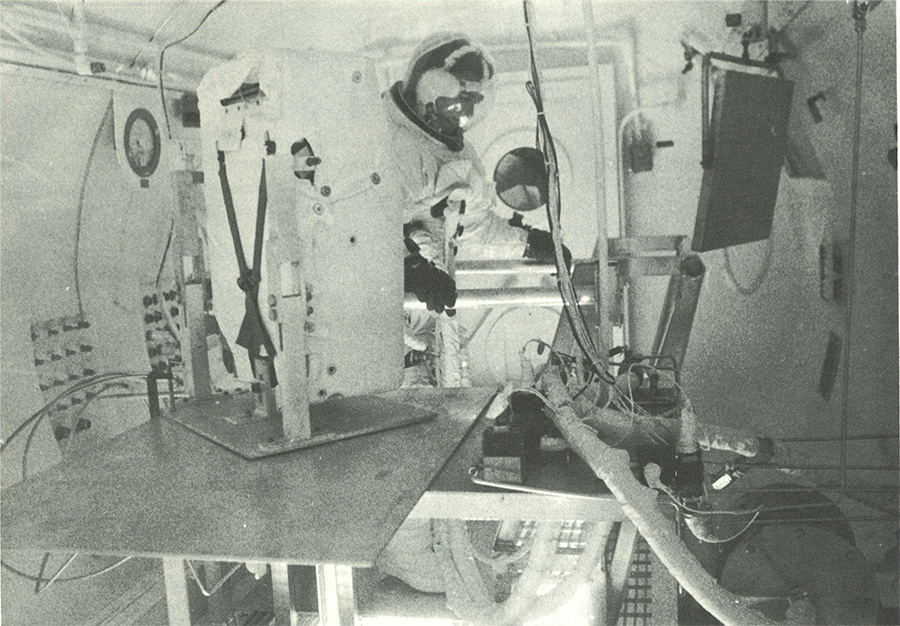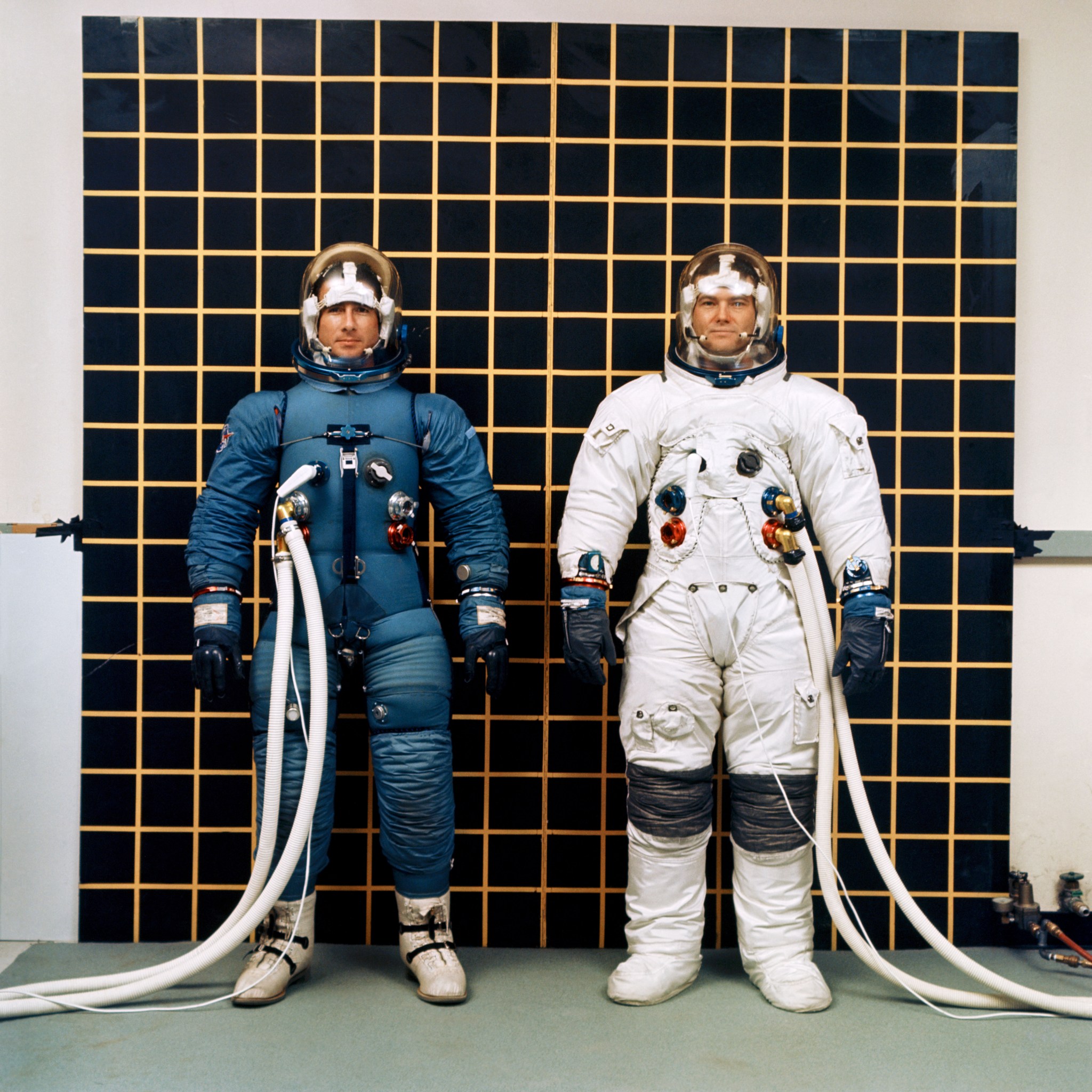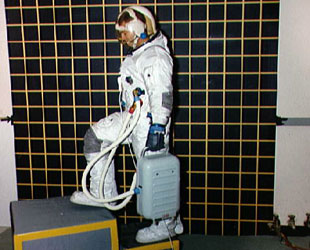A key component of the Apollo program was the development of a space suit to be worn by astronauts during launch and reentry as well as on the lunar surface. The suit needed to provide protection from the vacuum of space and extreme temperatures crew members would face while working outside the vehicle yet be flexible enough to allow adequate mobility especially on the lunar surface. NASA awarded the contract to design, manufacture and test the Apollo Block II space suit, to support both intra- and extravehicular activities, to International Latex Corporation (ILC) in September 1965. Following the Apollo fire in January 1967, NASA managers mandated that the suit incorporate non-flammable materials wherever possible. The first two redesigned suits, designated A-6L, arrived at the Manned Spacecraft Center (MSC) in September 1967 and underwent several months of unmanned testing.
On January 13, 1968, Astronaut James Irwin donned the redesigned suit for a three-hour altitude verification test in the MSC Crew Systems Division’s 8-foot altitude chamber in Building 7. The suit operated at 100 percent oxygen at a pressure of 3.7 psi, and the chamber simulated an altitude of 240,000 feet. Fellow Astronaut John Bull performed a similar run the next day. Irwin and Bull performed tasks simulating transfer from the Apollo Command Module (CM) to the Lunar Module (LM), and also recharged the Portable Life Support System (PLSS), the backpack for the suit that contains consumables, although they did not actually wear them. The PLSS, required only during space walks, would be certified during vacuum chamber tests later in 1968.
These runs certified the suits for human use during vacuum chamber testing of Lunar Test Article-8 (LTA-8) and 2TV-1, ground-based versions of the LM and CM, respectively, carried out later in 1968. The vehicle tests were critical to certify those spacecraft for human space flight. Based on the results of these tests, including recommendations by astronauts, NASA upgraded the suit to the A-7L version to provide more comfort and enable enhanced mobility. This is the version of the suit that astronauts wore during the Apollo 7 through 14 missions, during launch and reentry as well as during space walks. Based on space flight experience, engineers continually enhanced the suits, to improve mobility, visibility and materials durability. Crews on Apollo 15 through 17 wore a more advanced version of the suit, designated A-7LB. In 1971, Irwin himself would wear an A-7LB when he became the eighth person to walk on the Moon during the Apollo 15 mission.
For more on Apollo suits, see https://nescacademy.nasa.gov/catalogs/spacesuit.

































